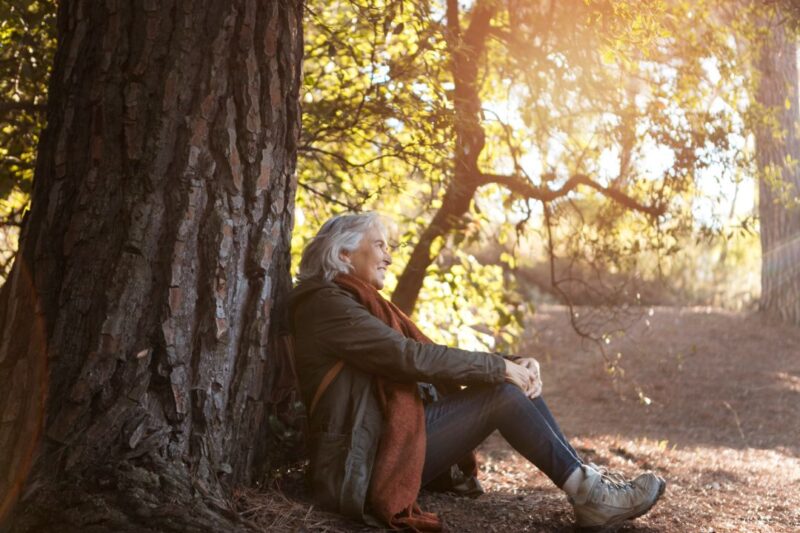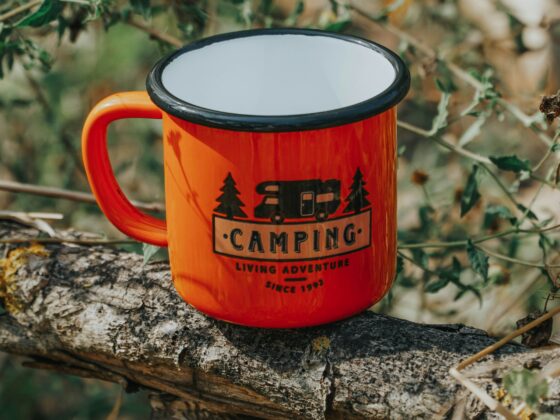Wilderness therapy is a therapeutic approach that combines outdoor adventures with mental health treatment. It is designed to help individuals, particularly those struggling with mental health issues or addiction, find healing and personal growth through immersion in nature. This unique approach leverages the restorative power of the great outdoors to facilitate self-discovery, build resilience, and promote overall well-being.
At its core, wilderness therapy recognizes the inherent connection between the human mind, body, and the natural world. By removing individuals from their everyday environments and placing them in wilderness settings, wilderness therapy creates a space for profound personal exploration and transformation. Participants engage in a variety of outdoor activities, such as hiking, camping, rock climbing, and kayaking, while also receiving professional therapeutic support and guidance.
The wilderness setting serves as a catalyst for personal growth, allowing individuals to confront their challenges, develop coping strategies, and cultivate a deeper understanding of themselves. The physical, mental, and emotional challenges encountered in the wilderness can foster a sense of accomplishment, resilience, and a renewed appreciation for the natural world.
Benefits of Wilderness Therapy
Wilderness therapy offers a wide range of benefits that can have a lasting impact on individuals’ lives. Some of the key advantages of this therapeutic approach include:
- Improved Mental Health: Wilderness therapy has been shown to be effective in treating a variety of mental health conditions, such as depression, anxiety, trauma, and substance abuse. The immersive nature of the experience can help individuals find relief from their symptoms and develop healthier coping mechanisms.
- Enhanced Emotional Regulation: The wilderness setting provides a space for individuals to better understand and manage their emotions. Faced with the challenges of the outdoor environment, participants learn to regulate their emotional responses, build self-awareness, and develop emotional resilience.
- Increased Self-Awareness and Confidence: Wilderness therapy encourages self-reflection and personal growth. As individuals overcome obstacles and achieve personal milestones, they often experience a boost in self-confidence and a deeper understanding of their strengths and capabilities.
- Improved Physical Health: The physical demands of wilderness activities, such as hiking, rock climbing, and kayaking, can improve overall physical fitness, cardiovascular health, and muscle strength. This, in turn, can have a positive impact on mental well-being.
- Stronger Interpersonal Relationships: Wilderness therapy often involves group activities and shared experiences, which can foster the development of meaningful connections and improve communication skills. Participants may learn to work collaboratively, offer support to one another, and build stronger social bonds.
- Reconnection with Nature: Spending extended periods in nature can help individuals reconnect with the natural world, fostering a sense of awe, appreciation, and a deeper understanding of their place within the ecosystem. This connection can have a profound impact on mental and emotional well-being.
How Does Wilderness Therapy Work?
Wilderness therapy programs typically involve a combination of outdoor activities, group therapy sessions, and individual counseling. The specific structure and duration of the program can vary, but the overall approach follows a similar framework:
- Assessment and Goal Setting: At the start of the program, participants undergo a comprehensive assessment to identify their specific needs, goals, and areas of focus. This helps the therapeutic team develop a personalized treatment plan.
- Wilderness Immersion: Participants are immersed in a wilderness setting, such as a remote forest, mountain range, or desert, where they engage in a variety of outdoor activities and challenges. These activities are designed to push participants out of their comfort zones and encourage personal growth.
- Therapeutic Interventions: Throughout the wilderness experience, participants receive regular therapeutic support, including individual counseling, group therapy, and educational workshops. These interventions help participants process their experiences, develop coping strategies, and work towards their goals.
- Reflection and Integration: At the end of the program, participants are given the opportunity to reflect on their experiences, identify key insights, and develop a plan for integrating their newfound skills and perspectives into their daily lives. This phase is crucial for ensuring the long-term benefits of the wilderness therapy experience.
The duration of a wilderness therapy program can range from a few days to several weeks, depending on the specific needs of the participants and the program’s objectives. Throughout the experience, participants are supported by a team of trained professionals, including therapists, wilderness guides, and medical staff, ensuring their safety and well-being.
Choosing the Right Camping Equipment Stores
When embarking on a wilderness therapy journey, it is essential to have the right camping equipment and gear. Choosing the right camping equipment stores can make all the difference in ensuring a successful and safe outdoor adventure.
Here are some tips to consider when selecting camping equipment stores for your wilderness therapy needs:
- Specialty Outdoor Stores: Look for specialized outdoor stores that cater to the needs of campers, hikers, and adventurers. These stores often have knowledgeable staff who can provide expert advice on the best equipment and gear for your specific wilderness therapy program.
- Product Selection and Quality: Ensure that the camping equipment store offers a wide range of high-quality products, from tents and sleeping bags to hiking boots and outdoor apparel. Quality gear can make a significant difference in the comfort and safety of your wilderness experience.
- Customer Service and Expertise: Opt for camping equipment stores with a reputation for excellent customer service and knowledgeable staff. They should be able to assist you in selecting the right gear and provide guidance on proper use and maintenance.
- Rental Options: Some camping equipment stores offer rental options, which can be particularly useful for individuals who may not have access to or need to purchase certain gear. This can be a cost-effective solution for your wilderness therapy program.
- Online Presence and Reviews: Check the store’s online presence, including their website and customer reviews. This can give you a better understanding of the store’s reputation, product selection, and the overall customer experience.
- Sustainability and Environmental Consciousness: Consider supporting camping equipment stores that prioritize sustainability and environmental responsibility in their product selection and business practices. This aligns well with the ethos of wilderness therapy.
By carefully selecting the right camping equipment stores, you can ensure that you have the necessary gear to make the most of your wilderness therapy experience and focus on your personal growth and healing journey.
Essential Camping Gear for Wilderness Therapy
When preparing for a wilderness therapy program, it is crucial to have the right camping gear to ensure your comfort, safety, and well-being. Here are some essential items from outdoor stores to consider:
- Tent: A high-quality, durable tent that can withstand the elements and provide a comfortable sleeping space.
- Sleeping Bag and Pad: Choose a sleeping bag rated for the expected temperatures and a comfortable sleeping pad to insulate you from the ground.
- Hiking Boots: Well-fitting, sturdy hiking boots with good traction and ankle support to navigate the wilderness terrain.
- Backpack: A comfortable and well-designed backpack to carry your gear during hikes and outdoor activities.
- Outdoor Clothing: Layers of moisture-wicking, quick-drying, and insulating clothing to accommodate various weather conditions.
- Cooking Gear: A portable camping stove, cookware, and utensils to prepare meals in the wilderness.
- Water Filtration System: A reliable water filtration system or purification tablets to ensure access to clean drinking water.
- First Aid Kit: A comprehensive first aid kit with essential medical supplies for minor injuries and emergencies.
- Navigation Tools: A compass, map, and GPS device to help you stay oriented and find your way in the wilderness.
- Lighting and Power: Headlamps, flashlights, and portable power banks to provide illumination and charge electronic devices.
- Sun Protection: Sunscreen, sunglasses, and a hat to protect against the sun’s harmful rays.
- Emergency Gear: Items like a whistle, signal mirror, and emergency blanket in case of unexpected situations.
By ensuring you have the right camping gear, you can focus on the therapeutic aspects of your wilderness experience without having to worry about the logistical challenges of outdoor living.
Tips for Planning a Successful Wilderness Therapy Trip
Embarking on a wilderness therapy journey requires careful planning and preparation to ensure a safe and meaningful experience. Here are some tips to consider:
- Consult with Professionals: Work closely with the wilderness therapy program staff to understand the specific requirements, activities, and logistics of the trip. They can provide valuable guidance and ensure you are well-prepared.
- Research the Location: Familiarize yourself with the wilderness area where the program will take place, including the terrain, climate, and any potential hazards or regulations.
- Pack Wisely: Refer to the essential camping gear list and pack only the necessary items. Avoid overpacking, as you’ll need to carry your gear during the outdoor activities.
- Prioritize Safety: Review safety protocols, emergency procedures, and first aid training with the program staff. Ensure you understand how to respond in various situations.
- Embrace the Challenge: Approach the wilderness therapy experience with an open mind and a willingness to step out of your comfort zone. The challenges you face can be transformative.
- Participate Actively: Engage fully in therapeutic activities and group discussions. The more you immerse yourself in the process, the more you’ll benefit from the experience.
- Reflect and Integrate: Take time to reflect on your experiences and insights during the program. Develop a plan to integrate the lessons learned into your daily life after the wilderness therapy trip.
- Stay Connected with Support Systems: Maintain communication with your support network, such as family and friends, to help you navigate the emotional and mental aspects of the wilderness therapy journey.
By following these tips and working closely with the wilderness therapy program staff, you can ensure a successful and transformative outdoor adventure that promotes healing and personal growth.
Final Thoughts
Wilderness therapy offers a unique and transformative approach to mental health and personal growth. By immersing individuals in the restorative power of nature, this therapeutic approach can help address a wide range of challenges, from mental health issues to addiction and trauma.
The key to a successful wilderness therapy experience lies in the right preparation and equipment. By carefully selecting the appropriate camping gear and outdoor stores, individuals can ensure their comfort, safety, and focus on the therapeutic aspects of the journey.
Ready to embark on a life-changing wilderness therapy adventure? Explore our selection of high-quality camping gear and outdoor equipment to make the most of your journey towards healing and personal growth.



